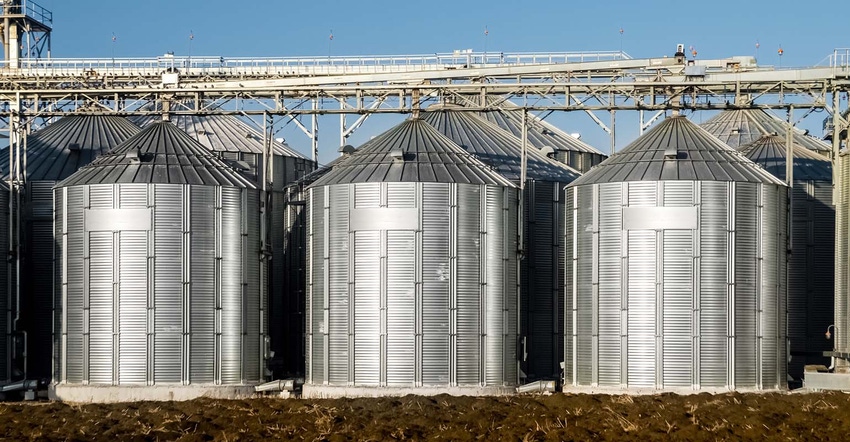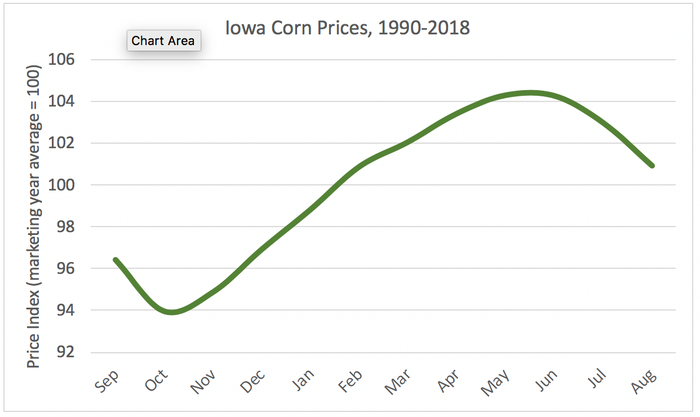
Many farmers have on-farm storage capacity. Grain bins can be useful in production, handling and marketing. Storage on the farm can speed your harvest by helping you avoid the long lines in town waiting to dump grain. Storage on farm is used to dry grain. For marketing purposes, storage helps you avoid harvest price lows.
But storage can be misused too. For some farmers, storage is a tool for carrying last year’s marketing problem into the next year, and sometimes the year after that. The odds for success are stacked against farmers who hold grain too long. If they had a better understanding of cash price patterns, producers would stop making the mistake of holding grain in storage too long.
Speaking of seasonal cash price patterns, look at the chart featuring nearly 30 years of Iowa corn price data. What is true for Iowa is true for every state in the Corn Belt – cash prices, on average, tend to be lowest at harvest and highest in May/June.

This seasonal pattern gives hope to producers who put grain into storage at harvest and wait for higher prices in the months ahead. Based on Iowa corn price data since 1965, there is better than an 80% chance of corn prices improving from October to May. I’m stating the obvious – the tendency for higher prices after harvest is there in the chart.
So why are too many producers blind to the flip side of this chart? Harvest prices for corn are, on average, 10% lower than the previous May/June. The peril of holding grain too long is right in front of your eyes.

What do the numbers tell us? For starters, the harvest price was better than the previous June in 8 of 29 years (28%). Clearly, higher prices at harvest are not a rare event. However, how often is the harvest price significantly higher than the previous June? For “significant,” I will use a standard of 10% or more (i.e. $4.00 corn in June is priced at $4.40 or better in October). That has happened just 4 times since 1990.
Now turn the equation around. How often is the price in June significantly higher (>10%) than the harvest price? That happened 14 of the past 29 years, or nearly half the time. This table reveals why I am a strict adherent to The 11th Commandment of Grain Marketing:
“Thou shall not hold unpriced corn or soybeans in storage beyond July 1”
Let me explain the risk of holding grain too long. As summer begins, farmers with unpriced grain in the bin are exposed to risks created by two powerful trends. First, new crop futures prices have a strong tendency to decline from late spring to harvest. The second trend involves basis. The basis for corn and soybeans tends to be strongest in late spring and the first half of summer, then it transitions towards harvest lows. A cash price is made of two components; the futures price plus the basis. Both components have a tendency to decline from late spring/summer to harvest.
Do you have unpriced grain in storage? Pay attention to The 11th Commandment!
Edward Usset is a Grain Market Economist at the University of Minnesota, and author of the book “Grain Marketing is Simple (it’s just not easy).” You can reach him at [email protected].
The opinions of the author are not necessarily those of Farm Futures or Farm Progress.
Read other articles in the Advanced Marketing Class series:
About the Author(s)
You May Also Like






